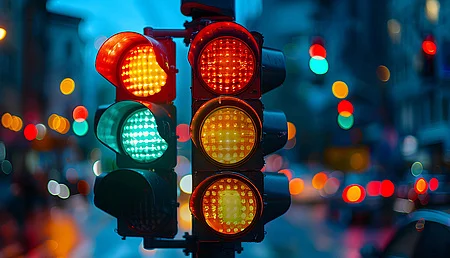
Brand defense 101: Making the reactive active
The business landscape has never been as competitive as it is today, meaning a company's reputation among consumers is inseparable from its image and indispensable to its brand. Yet public opinion is a precarious commodity, highly susceptible to third-party interference. Low-quality and dangerous knock-offs can dilute a positive consumer reception and even place a business's market standing at risk unless determined efforts are made to combat them. With imitation and counterfeit products on the rise, navigating the complexities of brand protection has never been more challenging or more necessary.
Thankfully, the insights of trademark advisors empower brand owners to safeguard and apply their Intellectual Property (IP) assets most effectively. By crafting and implementing a robust brand protection strategy, businesses can cement their market presence and set the stage for long-term success.
Each of the following IP mechanisms is a powerful defense in its own right, but their impact is multiplied when overlapped and used complementarily.
Trademark registration
Registering a portfolio of trademarks is a vital step in protecting a company's brand identity. This process legally secures exclusive rights to the names, logos, symbols or phrases used to identify the commercial origin of products or services, granting their owners nationwide protection and the avenue of court enforcement. It is a vigorous deterrent against unfair business practices and other potential wrongdoings, affording legal remedies, including the ability to seek damages in case of infringement.
Additionally, a trademark registration in a company's home jurisdiction can be used as the basis for an international application. The Madrid System, administered by the World Intellectual Property Organization (WIPO), provides a cost-effective means of applying for trademark protection in up to 130 countries.

Wording, fonts, colors, layouts and more combine to make a trademark memorable, and a memorable trademark is an effective one from a branding perspective. Subtle stylistic cues convey a mood to consumers, potentially swaying their purchasing decisions.
With that in mind, particular emphasis should be placed on registering trademarks in intended future markets if they are already prominent and protected in their country of origin. This is because unregistered marks are especially vulnerable to trademark squatting wherever they lack a prior history of use in commerce. Extortioners could recognize lucrative brands and register similar or identical marks in their own jurisdiction with the aim of selling them back to legitimate operators later on.
Copyright registration
In some countries like Pakistan, famous brands are advised to obtain copyright registrations in parallel with trademarks. Most brands use original creative works to signify their deliverables and communicate their value proposition to potential customers. This means that fonts, color schemes and content combinations can be registered for copyrights to provide an additional layer of legal protection. In this way, others are prevented from using or reproducing brand elements, even if the infringement occurs in connection with goods and services not covered by registered trademarks.
Crucially, copyrights and trademarks are not mutually exclusive, and the same instance of misappropriation could simultaneously infringe both IP rights. Stacking multiple claims in an IP lawsuit can potentially increase damage awards and the likelihood of receiving an injunction.
Vigilance and awareness mechanisms
Brand owners can further safeguard their assets and hard-earned consumer trust via a stringent vigilance policy. Firstly, sales and marketing teams should be trained to identify and report any counterfeits or replicas on the market. Secondly, guidelines may be produced for distributors and retailers, who should also be encouraged to flag up fake products. Regular education of staff in all relevant departments fosters a better understanding of the significance and methods of brand integrity.

A company's brand represents all its departments, not only the marketing and IP teams. Promoting awareness of your brand's value among colleagues places more eyes on the lookout for infringement and helps instill a sense of shared pride in achievements.
Public awareness campaigns can also aid brand defense by warning of the harm counterfeits can cause and increasing consciousness of the criminal activities they fund. This can be done through various channels, e.g., seminars, sponsored events, government partnerships and social media promotions.
Customs registrations
Trademark holders have a crucial role in preventing counterfeit goods from infiltrating legitimate markets, and one effective strategy is working with local customs authorities to enforce IP rights. These agencies can undertake rigorous inspections of incoming shipments, taking swift action against fakes, including imposing fines, seizing infringing goods and carrying out their destruction. Such measures help deter counterfeiters, guard the brand's reputation and spare consumers from hazardous products.
By recording their registered trademarks with customs authorities, brand owners can bolster the speed and effectiveness of searches, simultaneously guarding their IP rights and ensuring a healthier and more just marketplace.
Private investigations
Brand owners can consider hiring third-party experts, such as brand protection agencies and law firms, to investigate the distribution of counterfeits and identify perpetrators. Utilizing this information, businesses can take concerted action against the infringers together with the appropriate local or international authorities, pursuing legal remedy in the relevant jurisdictions.

IP infringement is not always blatant and could go unnoticed in secondary markets without an earnest approach to monitoring. Companies that cannot dedicate internal resources to these activities may benefit greatly from enlisting a specialist service provider.
More commonly, however, a company will need external help monitoring trademark gazettes and similar publications for potentially infringing applications. Particular scrutiny can be leveled at players who act in bad faith or problem jurisdictions where examinations and enforcement are lax. It may also be necessary to oppose overreaching trademark applications that stray into the public domain, as these can restrict a brand's advertising freedom.
E-commerce and social media
Even prior to the COVID-19 pandemic, it was increasingly convenient for buyers to shop via e-commerce platforms, with speedy delivery right to their doorstep. Over the last few years, this trend has only increased substantially. It follows then that regular monitoring of online marketplaces and social media can contribute to brand security and stop the unauthorized use of IP assets.
On that note, e-commerce platforms rely on takedown notices to combat IP infringement but might not actively search for infractions. Fortunately, reporting a violation of exclusive rights is a straightforward process in many digital economies and can usually be done on the platform itself or through court orders in certain jurisdictions.
Keeping people away from fake goods
When presented with counterfeits, consumers can be categorized into two broad groups: One is unaware of the inauthenticity of the products, taking them on their face; the other knowingly purchases fraudulent items to save money, overlooking the unethical practices often associated with their manufacture.

Counterfeiting is far from a "victimless crime," as many in the fashion industry can attest. Cheap knockoffs undercut honest suppliers who pay their workers a proper wage. In turn, this encourages exploitative manufacturers to continue taking advantage of desperate clothesmakers.
Thus an effective brand protection strategy benefits manufacturers, corporations and consumers by promoting access to authentic, safe goods, promising accountable value for money and delivering fair compensation for workers.
Benefits of brand protection
Maintaining a favorable reputation among consumers and the general public is essential for a brand to uphold its market position and build on success. By the same token, businesses set themselves up for sustainable market growth when they implement a well-formulated IP enforcement plan. If a company neglects this duty of care, it could mean death by a thousand infringements or a catastrophic loss of customer trust.
Hence, a defensible portfolio of registered rights paves the way for setting future goals while upholding what has already been achieved. That said, the IP practices detailed above do not guarantee a brand's welcome reception but remain fundamental to securing the goods consumers buy and the goodwill they extend in return.
Brand owners can take every confidence in the fact they do not have to be alone in building, maintaining and shielding their IP portfolios. No matter the jurisdiction, the respected, experienced legal and commercial experts from Dennemeyer are at hand to strategize with businesses and implement the best possible brand protection. Because when it comes to IP, it does not pay to be inert and lay low; those brands that grab the bull by the horns are the most likely to be left standing tall.
Filed in

Learn why brand name and trademark law matter for your business, from marketing efforts to bottom lines.



